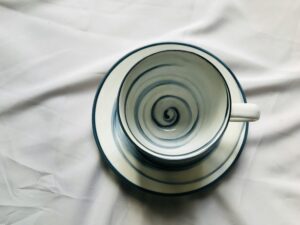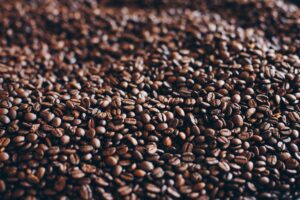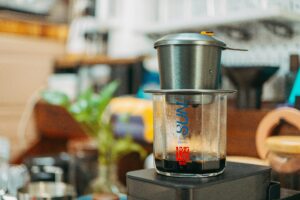Have you ever wondered how professional baristas and roasters evaluate coffee? The secret lies in a tasting method called cupping. This standardized technique is used worldwide to assess the quality, flavor notes, and overall profile of coffee beans.
Table of Contents
Whether you’re a coffee enthusiast, aspiring barista, or just curious about the nuances of your morning brew, learning how to cup coffee like a pro can transform your relationship with the drink. In this guide, we’ll break down what cupping is, how to do it at home, and how to interpret the flavors you experience.
What Is Coffee Cupping?
Coffee cupping is a method used to evaluate the aroma, flavor, and quality of coffee beans. It’s an essential part of the process for roasters, buyers, and coffee professionals who need to compare different beans or check for consistency across batches.
Unlike regular brewing, cupping removes most variables. The grind size, water temperature, steep time, and brew ratio are standardized to allow for a neutral tasting environment, ensuring the beans speak for themselves.
Cupping isn’t just for professionals—anyone can learn it. All it takes is a few tools, a little patience, and an open palate.
Why Is Cupping Important?
Cupping helps you develop your coffee palate, which improves your understanding of different origins, roast levels, and processing methods. It teaches you to notice subtle differences in:
- Acidity (brightness or tartness)
- Sweetness (natural sugar notes)
- Body (mouthfeel and weight)
- Aftertaste (lingering flavors)
- Aroma (fragrance before and during sipping)
- Balance (how well the components work together)
Professional roasters use this method to refine their blends, detect defects, and make purchasing decisions. As a home brewer, cupping helps you choose beans you’ll genuinely enjoy.
Tools You Need to Cup Coffee at Home
You don’t need commercial-grade tools to start cupping. Here’s what you’ll need:
- Fresh whole coffee beans (at least 2–3 origins to compare)
- Grinder (burr grinder recommended for consistency)
- Scale (to measure beans accurately)
- Cupping or soup spoons
- Hot water (just off boil, around 200°F / 93°C)
- Cups or bowls (5–6 oz capacity)
- Timer
- Notebook or cupping form
Optional but helpful:
- Tasting wheel or flavor chart
- Filtered water for clean extraction
How to Cup Coffee Step-by-Step
Now let’s walk through the full cupping process so you can taste like a pro.
Step 1: Measure and Grind
Use a medium-coarse grind, similar to what you’d use for a French press. For each sample, grind 8.25 grams of coffee per 150 ml of water (a typical cupping ratio).
Grind each coffee just before cupping to preserve the aromas.
Step 2: Smell the Dry Grounds
Before adding any water, bring your nose close to the cup and inhale the dry aroma. This is often the first indication of a coffee’s personality. Look for fruity, floral, nutty, or chocolatey scents.
Note your impressions. Each origin or roast will carry distinct dry fragrance notes.
Step 3: Add Hot Water
Start a timer and pour hot water directly over the grounds (about 200°F or 93°C). Fill the cup to the brim without stirring.
Let the coffee steep for 4 minutes. During this time, a thick layer of grounds (called the crust) will form on top.
Step 4: Break the Crust
After 4 minutes, take your spoon and gently push the crust back while inhaling deeply. This is known as breaking the crust, and it releases a powerful wave of aroma.
This is one of the most intense and telling stages of cupping. Make note of what you smell—this will inform what you might taste later.
Step 5: Skim the Surface
Use two spoons to remove any floating grounds and foam left on the surface after breaking the crust. This helps keep the cup clean for tasting.
Step 6: Taste the Coffee
Let the coffee cool for a few minutes—it should be warm, not hot. Then take a spoonful and slurp it loudly into your mouth. This aerates the coffee, spreading it across your palate.
Focus on these attributes:
- Acidity: Is it bright like citrus or mellow like apple?
- Sweetness: Does it remind you of brown sugar, honey, or fruit?
- Body: Is it creamy, light, or syrupy?
- Flavor: Can you detect chocolate, berries, herbs, or spices?
- Aftertaste: Does it linger pleasantly or fade quickly?
Slurping might feel odd at first, but it’s key to detecting the full range of flavor notes.
Step 7: Take Notes
As the coffee continues to cool, keep tasting and jotting down what you experience. Flavors evolve with temperature, so revisit each sample multiple times.
Use a cupping form or tasting wheel to help describe your experience. Over time, this builds your vocabulary and helps you train your palate.
Interpreting Coffee Flavors Like a Pro
Professional tasters use a flavor wheel (like the one from the Specialty Coffee Association) to guide their assessments. When describing a coffee, start general and then get specific.
For example:
- Start with fruit
- Then narrow to berry
- Finally land on blackberry or raspberry
This system helps tasters communicate clearly with producers, roasters, and fellow drinkers. You can do the same at home to better articulate what you love (or don’t love) in a particular coffee.
Common tasting notes include:
- Fruity: lemon, apple, berry, dried fruit
- Floral: jasmine, rose, lavender
- Nutty/Spicy: almond, cinnamon, clove
- Sweet: caramel, honey, vanilla
- Savory/Earthy: tobacco, cedar, mushroom
- Chocolatey: milk chocolate, dark cocoa, fudge
Practice Makes Your Palate Better
Tasting coffee like a pro doesn’t happen overnight. It’s a skill you build with practice, repetition, and curiosity. Try cupping different origins side by side: compare an Ethiopian natural with a washed Colombian, or a light roast with a dark roast.
Challenge yourself to cup without looking at the labels. Blind tasting removes bias and sharpens your focus on flavor. Over time, you’ll be amazed at how much more you notice.
Why Every Coffee Drinker Should Try Cupping
Even if you’re not a barista, cupping offers a deeper appreciation for coffee. It turns a daily routine into an intentional, sensory experience. You’ll start to recognize what you prefer—whether it’s a bright, citrusy African roast or a smooth, chocolatey Central American bean.
Cupping also empowers you to spend smarter. Once you understand what you like, you can choose beans that match your taste rather than relying on vague labels.
Final Thoughts
Cupping is one of the best ways to connect with the world of coffee. It slows you down and invites you to explore the complexity in every cup. You don’t need expensive gear or professional training—just a willingness to taste, reflect, and enjoy.
So gather a few bags of single-origin beans, set up your home cupping station, and get slurping. Your taste buds—and your morning brew—will thank you.






